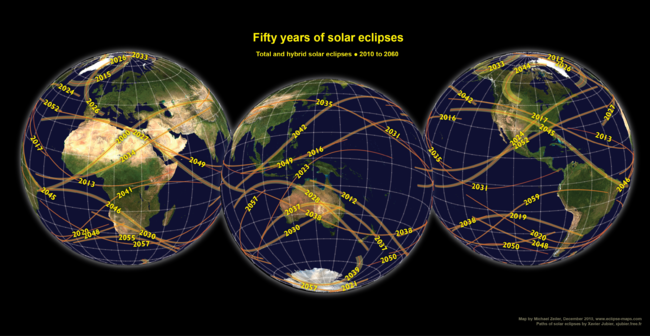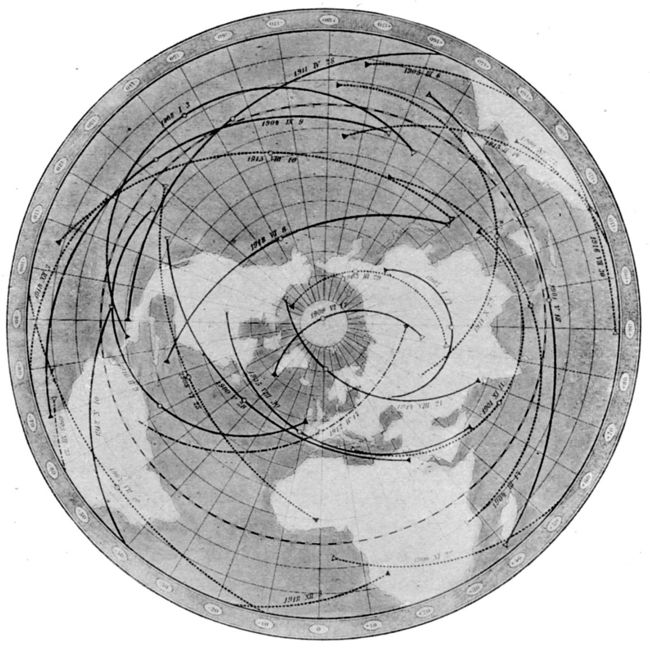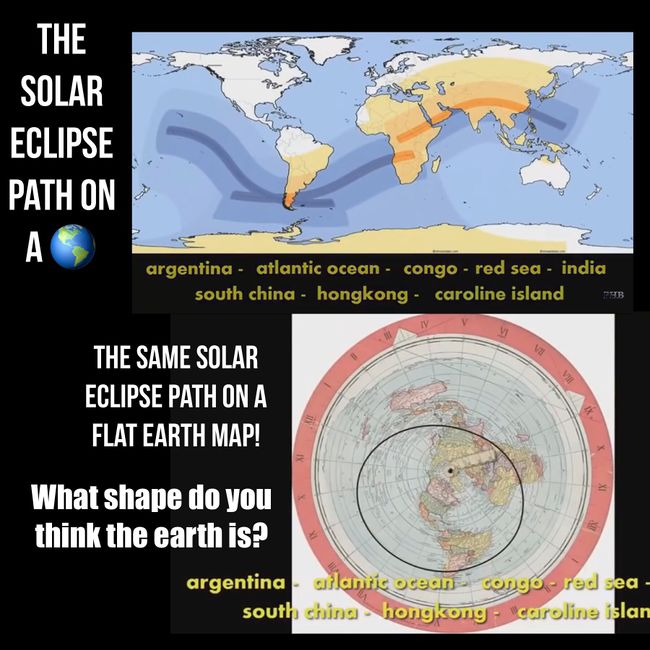Solar Eclipse
A Solar Eclipse occurs when an observer on Earth passes through the shadow cast by the Moon which fully or partially blocks the Sun. This happens when the Moon blocks the path of light between the Sun and the observer, and when the Moon is close to the ecliptic. In a total solar eclipse, the disk of the Sun is fully obscured by the Moon. In partial and annular eclipses, only part of the Sun is obscured.
Sun Moon Size Coincidence
It is said that under RET it is an "extraordinary coincidence" that the maximum size of the Moon during a total solar eclipse matches the size of the Sun. From p.67 of A Question and Answer Guide to Astronomy by Astrophysicists Carol Christian (bio) and Jean-René Roy (bio):
“ Is it just coincidence that the apparent diameters of the Moon and the Sun are the same?
Yes, it is a coincidence that the two diameters are the same but it was not always so. The diameter of the Sun is about 400 times that of the Moon, but the Sun is also 400 times further away from us than the Moon. The configuration leads to the same apparent diameters for both objects when seen from Earth (05°). This extraordinary coincidence grants us the opportunity to have total eclipses of our star, a majestic cosmic phenomenon that used to terrify ancient peoples. ”
Astrophysicist John Gribbin (bio) writes in Alone in the Universe: Why Our Planet is Unique:
“ Just now the Moon is about 400 times smaller than the Sun, but the Sun is 400 times farther away than the Moon, so that they look the same size on the sky. At the present moment of cosmic time, during an eclipse, the disc of the Moon almost exactly covers the disc of the Sun. In the past the Moon would have looked much bigger and would have completely obscured the Sun during eclipses; in the future, the Moon will look much smaller from Earth and a ring of sunlight will be visible even during an eclipse. Nobody has been able to think of a reason why intelligent beings capable of noticing this oddity should have evolved on Earth just at the time that the coincidence was there to be noticed. It worries me, but most people seem to accept it as just one of those things. ”
See also:
- Scientific American - The Solar Eclipse Coincidence - "It is an interesting coincidence that the Moon should so nearly perfectly blot out the Sun, since there is really no physical reason why this has be the case."
Solar Eclipse Path Comparison
It is of interest that on the globe the paths of the Solar Eclipse look rather odd:
On the Flat Earth map the paths appear to be symmetrical arcs:
From A Text-Book of Astronomy by George C. Comstock (p.113) (Archive)
“ Fig. 36.—Central eclipses for the first two decades of the twentieth century. Oppolzer.
Future eclipses.—An eclipse map of a different kind is shown in Fig. 36, which represents the shadow paths of [pg. 114] all the central eclipses of the sun, visible during the period 1900-1918 A. D., in those parts of the earth north of the south temperate zone. Each continuous black line shows the path of the shadow in a total eclipse, from its beginning, at sunrise, at the western end of the line to its end, sunset, at the eastern end, the little circle near the middle of the line showing the place at which the eclipse was total at noon. The broken lines represent similar data for the annular eclipses. This map is one of a series prepared by the Austrian astronomer, Oppolzer, showing the path of every such eclipse from the year 1200 B. C. [pg. 115] to 2160 A. D., a period of more than three thousand years. ”
Further Reference
Also see this interesting comparison:
Prediction
Prediction in astronomy is generally achieved through assessment of patterns. Astronomers use cycles to predict the recurrence of the eclipses.
See: Astronomical Prediction Based on Patterns - The Eclipses



